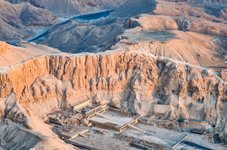Sublime
An inspiration engine for ideas
Warriors of the Steppe: A Military History of Central Asia 500 BC to 1700 AD (New
Tim Cope • On the Trail of Genghis Khan: An Epic Journey Through the Land of the Nomads
In a different context again, in 1962 an innovative coffer-dam excavation revealed five ships that had been deliberately scuttled in the eleventh century to form part of a sunken blockade controlling access to the Roskilde fjord in Denmark. They proved to be of types that had not been seen before in the archaeology, but which expanded the typology
... See moreNeil Price • The Children of Ash and Elm
「王家の谷」の王墓、ツタンカーメン以来100年ぶりの大発見
natgeo.nikkeibp.co.jp
The situation of the Yamnaya chiefs might have been similar to that described by Barth in his account of the Yusufai Pathan invasion of the Swat valley in Pakistan in the sixteenth century. The invader, “faced with the sea of politically undifferentiated villagers proceeds to organize a central island of authority, and from this island he attempts
... See moreDavid W. Anthony • The Horse, the Wheel, and Language: How Bronze-Age Riders from the Eurasian Steppes Shaped the Modern World
For example, reasonably solid lexical reconstructions indicate that Proto-Indo-European contained words for otter, beaver, wolf, lynx, elk, red deer, horse, mouse, hare, and hedgehog, among wild animals; goose, crane, duck, and eagle, among birds; bee and honey; and cattle (also cow, ox, and steer), sheep (also wool and weaving), pig (also boar,
... See moreDavid W. Anthony • The Horse, the Wheel, and Language: How Bronze-Age Riders from the Eurasian Steppes Shaped the Modern World
The six individual groups who made up the Sea Peoples during this wave of invasion—the five mentioned above by Ramses in the Medinet Habu inscription and a sixth group, named the Shardana (also sometimes called the Sherden), mentioned in another relevant inscription—are far more shadowy than the lands that they reportedly overran. They left no
... See more
